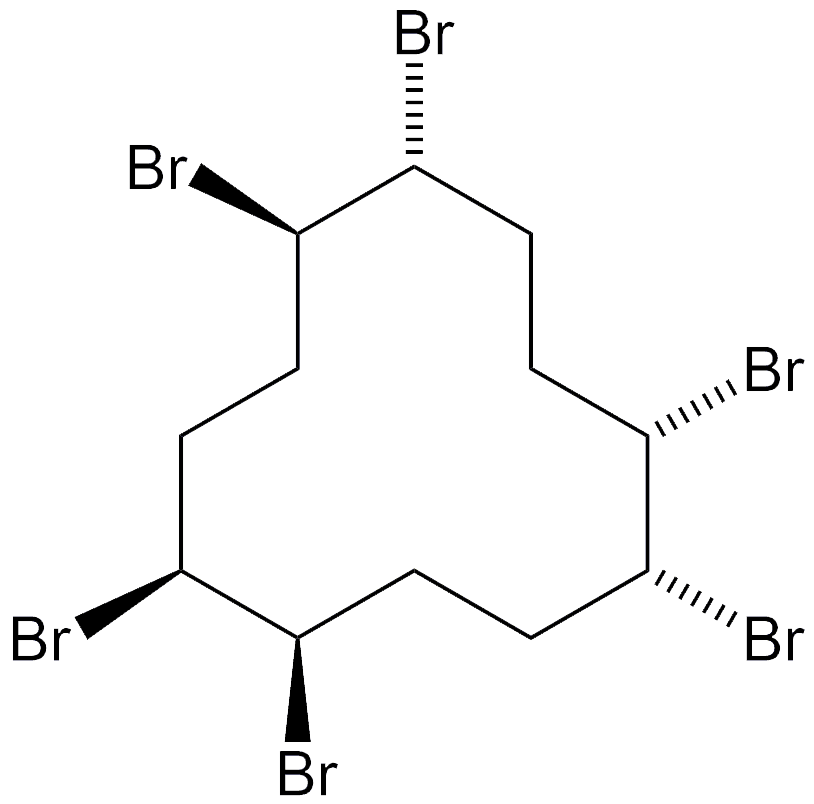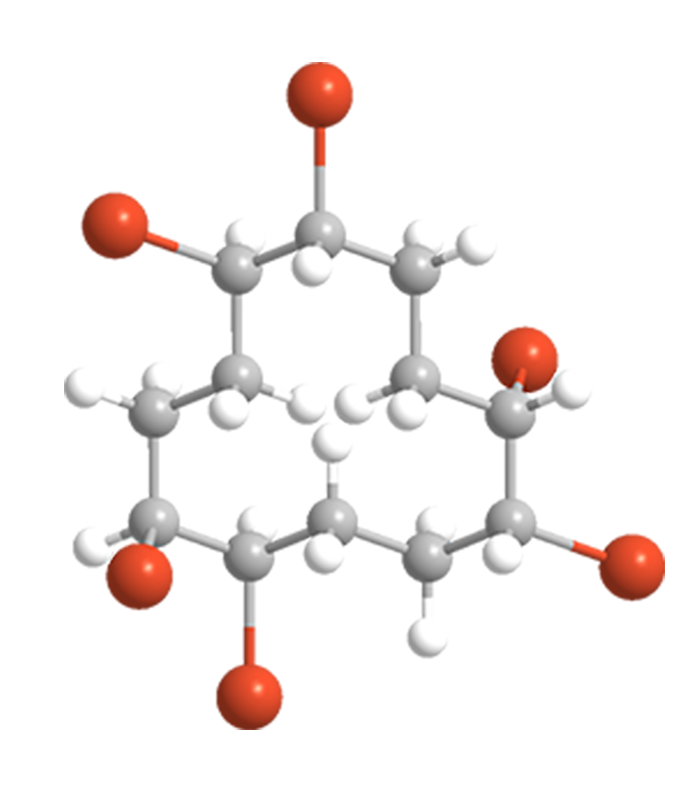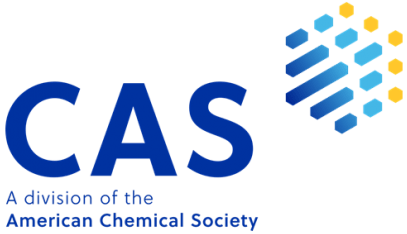

Hexabromocyclododecane (HBCD) is a bromine-containing flame retardant used primarily in polystyrene insulating foam. It is used in very low amounts (0.2–0.7% in the foam), but it accumulates in the environment and is toxic to aquatic organisms and laboratory animals. Earlier this year, member countries of the Stockholm Convention on Persistent Organic Pollutants agreed to end HBCD production, but a ban on its use will not go into effect until 2019. Current HBCD producers have committed to developing alternative flame retardants.
HBCD is a mixture of 16 diastereomers. One of the more abundant ones, (–)-α, is shown in the figure.
MOTW update: January 22, 2018
Previous environmentally problematic Molecules of the Week tetrachloroethylene, N-methyl-2-pyrrolidone, and hexabromocyclododecane are in the news again. They are among the chemicals in the “First 10” list for reevaluation under the revised Toxic Substances Control Act of 2016. But last month the Trump administration put additional restrictions of the substances on hold, with no set date for implementation.
MOTW Update: February 13, 2017
Bis(2-ethylhexyl) phthalate, di-n-butyl phthalate, methylparaben, and hexabromocyclododecane are all former Molecules of the Week. Last month, Janet Pelley wrote in ACS Central Science that these and many other commercial products are principal components of common household dust. (A similar article appears in this week’s C&EN.) The alarming aspect of these findings is that all of these compounds are toxic, primarily to the human reproductive, hormonal, and nervous systems.
MOTW update:
November 18, 2019
Former Molecules of the Week 1,4-dioxane, hexabromocyclododecane, 1-bromopropane, N-methyl-2-pyrrolidone, and dichloromethane, among several other chemicals, are at the center of a controversy about how the EPA’s scientific advisory committees are evaluating risks of air pollution. The problems are the lack of expertise in some of the committees and a shortage of adquate data to evaluate the chemicals. Industrial and environmental stakeholders are critical of the latest risk assessments.

Learn more about this molecule from CAS, the most authoritative and comprehensive source for chemical information.
Molecule of the Week needs your suggestions!
If your favorite molecule is not in our archive, please send us a message. The molecule can be notable for its current or historical importance or for any quirky reason. Thank you!
Stay Ahead of the Chemistry Curve
Learn how ACS can help you stay ahead in the world of chemistry.

